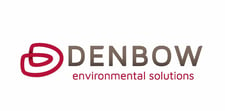A Guide to Working In and Around A Fish Habitat
By Willetta Les - Marketing Manager Denbow
All of us at Denbow realize the importance of fish habitats and protecting the fish from urban development. We believe it is essential that we all understand the best practices for working around fish habitats and streams. We’ve adapted a short guide to help you understand what you must know before you work in and around a fish habitat. This guide does not replace any legal or contractual obligations; it simply shares information and offers an education on the best practices in erosion and sediment control in and around a fish habitat.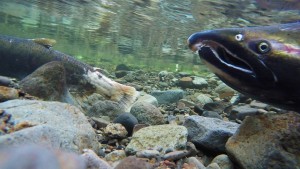
What is A Fish Habitat?
Under the Fisheries Act, a fish habitat is defined as “Spawning grounds and nursery, rearing, food supply and migration areas on which fish depend directly or indirectly in order to carry out their life process (Fisheries Act Section 34(1))”.
In other words, the habitats include not only the water in rivers, lakes, streams and oceans, but also the quality of that water. Furthermore, the total surroundings in which plants and other life forms interact to make fish life possible are considered. The vegetation adjacent to the waterway is a critical part of fish habitat as it provides nutrients, shade and buffers waterways from sedimentation and pollution during surface runoff.
What is Contained in the Fisheries Act?
Prohibitions unless authorized include the following:
- Obstruction of fish migration (Fisheries Act Sections 22 and 26)
Cannot install or allow any material (rock, log, slide, dam, perched culvert) to impede the free passage of fish at all life stages.
- Destruction of fish (Section 32)
Cannot destroy fish by any means other than fishing.
- Harmful Alteration, Disruption, Destruction (HADD) (Section 35)
Cannot change the natural courses and processes of fish habitat.
- Depositing of substances deleterious to fish in waters frequented by fish (Section 36)
It is unlawful to deposit a harmful substance either directly or indirectly into a fish-bearing stream. This includes the top of banks or ditches that lead to a fish-bearing stream. Deposit means any discharging, spraying, releasing, spilling, leaking, seeping pouring, emitting, emptying, throwing, dumping or placing.
Deleterious (toxic or harmful) means any substance (e.g. petroleum products, concrete wash, soil/sediment) that is harmful to fish, water quality or limits the use by fish. It can also be considered deleterious if the material impairs a fish's ability to reproduce, to capture its food, to make the transition from freshwater to the sea, or if it causes a fish to be more susceptible to disease or predation.
One way to prevent soil and sediment from entering a stream is to implement a sediment control barrier. This can be done by using FilterSoxx™ to prevent the sediments from running into the stream.
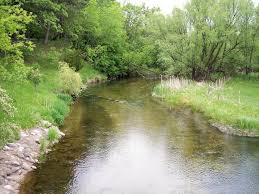
Working In and Around A Fish Habitat
Prior to Starting Work Know Your Plan and Avoid Problems!
What You Can Do
Make sure you do your due diligence. Don’t take someone’s word for it. Fish habitats are really important and with proper research and applications, it can easily be protected.
Therefore, it is your responsibility when working in and around water to ensure the following:
- Recognize and address the potential impacts to aquatic and riparian habitats, water quality and quantity, fish, public safety and property from your proposed works;
- Recognize and address the need to conduct your works in a manner that complies with the law and avoids, mitigates or lessens potential impacts to aquatic and riparian habitats, water quality and quantity, fish and wildlife populations and public safety and property;
- Ensure the protection of fish and their habitats including species at risk;
- Ensure the protection of properties and human health;
- Ensure the appropriate permits and authorizations have been obtained from all regulatory agencies before proceeding with activities;
Avoid a HADD (Harmful Alteration, Disruption, Destruction)
Work near streams can usually avoid a HADD of the fish habitat if the work spans the stream (including streambanks) or can be undertaken without:
- Disturbing instream fish habitat
- Encroaching within the stream channel or active floodplain; or causing excessive, avoidable or irreplaceable loss of riparian vegetation
A stream channel is defined as:a watercourse that contains flowing water at least part of the year, in other words it can still be a stream if it is dry or partially dry.
An active floodplain is the level area adjacent to the stream that water periodically floods into.
What You Cannot Do
We know this seems a little obvious but let’s do our due diligence and make sure you don’t cause an unauthorized HADD.
Any works within the fish habitat (including the water and the surrounding riparian area/vegetation) has the potential to create a HADD unless precautions are taken. This is easily addresses by implementing streambank restoration solutions such as Filtrexx FilterSoxx™ or Terraseeding to prevent erosion and sediment run off.
If work near a stream or in a stream will result in a HADD, you must have an Authorization from Fisheries and Ocean Canada before commencing work. All other works are assumed to be completed without creating a HADD.
For Crossing Sites, unless authorized, this means there should be absolutely NO:
- Placement of riprap within the stream channel
- Place of any portion of the crossing structure within the stream channel
- Removal of riparian vegetation except for the placement of abutments and rock protection upslope of the stream banks (retain vegetation adjacent to the streambank)
- Storage of construction material, waste or spoil within the riparian management area
- Construction of pullouts within the riparian management area
- Extraction of road building material from quarries or ditchlines within the riparian management area
- Construction of ditches to direct runoff to the stream
- Inputting of materials (wood, rock etc) into the stream
- Disturbance of the stream banks
- Removal of instream material (wood or rock)
- Machinery working within the watercourse
- Machinery crossing the stream channel in areas of highly erodable soils and steep crossing locations without protective measures in place
- Machinery crossing the stream channel outside the instream timing windows unless permitted by agencies (during the window must be done in such a manner that it does not create a HADD)
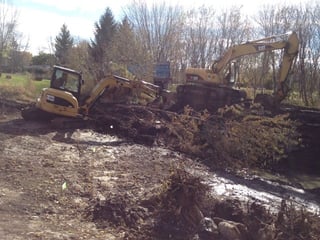
Be Aware of the Fisheries Window
Timing windows (periods of least risk) are periods of time when work in and about a stream can be conducted with reduced risk to fish and fish habitat. Anytime that any works come into contact with or impact a fish habitat, they are considered “instream works”. Be incredibly diligent with your SOP around critical and non-critical fish migrations.
Although the timing window is a time of reduced risk, fish (juvenile or adult) may still be present on site. Care must still be taken to avoid harming fish and fish habitat. This is the whole point of educating and informing us all about working around water ways. We need to protect the fish.
It is a period of time, when notifications are completed and a suitable plan is in place, that equipment can cross or work within a stream.
Ministry of Environment Notifications are required for any instream works (work within or on the banks of a stream, equipment within/crossing the stream) as per Section 9 of the Water Act. Notification can be made on the following site: http://wlapwww.gov.bc.ca/vir/wateract/index.html
Outside the timing window you can proceed if:
- The structure does not encroach on the stream channel width, no work is proposed within the stream channel of a fish stream or fisheries sensitive zone, and the risk of sediment delivery is low.
- The work is on a non-fish stream and the appropriate measures are undertaken to prevent the delivery of sediments into the fish habitat.
- The streambed is completely dry and there is NO potential for a HADD or future erosion and sediment concerns.
- Works are on a non-fish bearing stream that is a direct tributary to a fish stream and the site can be isolated by keeping the site dry by pumping or otherwise diverting water flow around the worksite.
During a timing window you can proceed if:
You have completed the necessary notifications and a suitable plan is in place. The plan should capture the following:
- Cross the waterway with a machine.
- Place any material within the stream channel (permanent or temporary) which may need some approvals from regulatory agencies.
- Protection measures such as site isolations, fish removals, sediment controls and shutdowns are undertaken as required (prior to or during or post construction)
- The Environmental Monitor, if a job requirement, is on site.
- All crews working on the project are aware of the work plan (including protection measures) and any recommendations from the regulatory agencies.
Timing windows as listed in provincial and federal documents are approximations and may be varied with consultation of local agencies. Water temperatures, water levels and fish growth stage are an integral part of determining local fisheries windows.
What is an Environmental Monitor?
An environmental monitor's primary job requirement is to study the natural world and to make sure that human activities don’t harm the environment. For example, an environmental monitor working for a mine would spend most days outdoors collecting samples of water, air, land, and plants. They would measure the dirt roads, making sure the roads don’t erode into the nearby creek and create silt in the creek (which would probably kill any fish in the creek). They’d collect all of this data out in the field and send it back to labs for analysis. Environmental monitors generally work for government departments, environmental boards, large corporations, and consulting companies.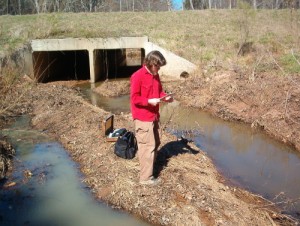
Job duties
Duties vary significantly from job to job, but the following list includes typical job duties an environmental monitor would be responsible for:
- Keep track of the effects that new programs or projects have on the environment
- Collect samples to study air and soil pollution
- Help in the operation and maintenance of water monitoring
- Operate and maintain field and lab equipment
- Identify archaeological resources
- Write technical reports
- Operate various motor vehicles and, possibly, firearms
Role of the Environmental Monitor
The Environmental Monitor (EM) is on site to:
- Ensure that works are completed in compliance with the applicable regulations and legislation
- Ensure compliance with the approved Work Plan or authorize changes
- Ensure due diligence for works near aquatic habitat is being conducted
- Has the authority to make a decision on the contractor’s Best Management Plans (crossing sites, sediment control measures, vegetation removal and techniques etc) produced to minimize the impacts of the works on the aquatic environment
- Can determine the potential for impacts (HADD) to fish habitat during certain activities such as machinery crossing a stream, removal/cutting of instream material (i.e. log in way of bridge installation) or vegetation removal.
- Has authority from land owner/licencee to issue a Stop Work order if there is the potential to impact fish and or their habitats
- May carry out necessary fish salvage operations
- Will promote environmental awareness to onsite crews
- Will have a pre-work onsite review of the proposed works with all workers
- Liaise with regulatory agencies.
- Depending on the nature of the works and the sensitivity of the site, the EM may be on site continually or may make periodic site visits.
- Be a part of your team to ensure there is a safe crossing structure installed that does not impact fish or fish habitat.
- The Environmental Monitor works with all agencies and must be informed of plans prior to work commencing.
The EM must have input into or be on site prior to the site being accessed by construction crew for the following:
- New construction
- Before road is sub-graded to crossing, riparian vegetation is removed or machinery crosses streams
- Rebuilds or Deactivation
- Prior to any works starting
In conclusion, work around streams is sensitive but there are great solutions available. Natural products to control sediment and erosion, as well as installation methods such as blower trucks that allow for these products to be placed with no impact to the fish habitat. We recommend the use of an environmental monitor or consultant to ensure all work is completed properly within the laws and guidelines of your project location.
------
References
Canada’s Fish Habitat Law
Water Quality & Fish Pollution
Canadian Waters Info Centre – Policy for the Management of Fish Habitat (Fisheries and Oceans Canada)
Canadian Waters Info Centre – Working In and Around Water (Fisheries and Oceans Canada)
Standards and Best Management Practices for Instream Works (Ministry of Environment)
Fish-stream Crossing Guidebook (Forest Practices Code of British Columbia)
Adapted from BC Gov’t Article here: http://www2.gov.bc.ca/gov/content/environment/air-land-water/water/water-licensing-rights/working-around-water
Environmental Monitor: http://www.eco.ca/career-profiles/environmental-monitor/
Save
Save
